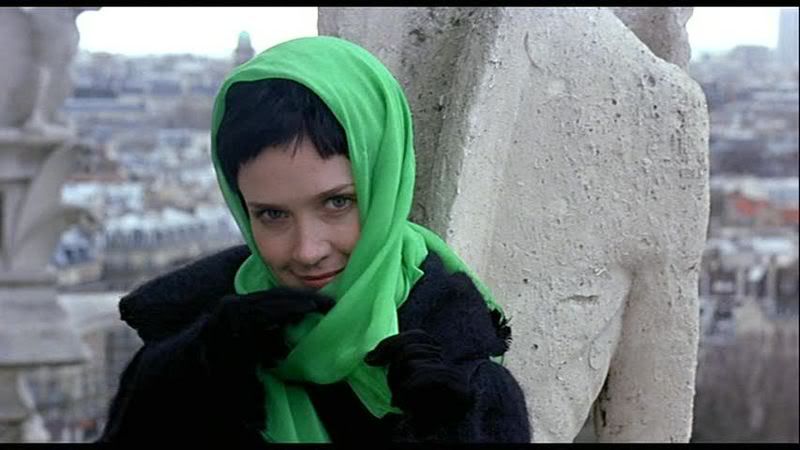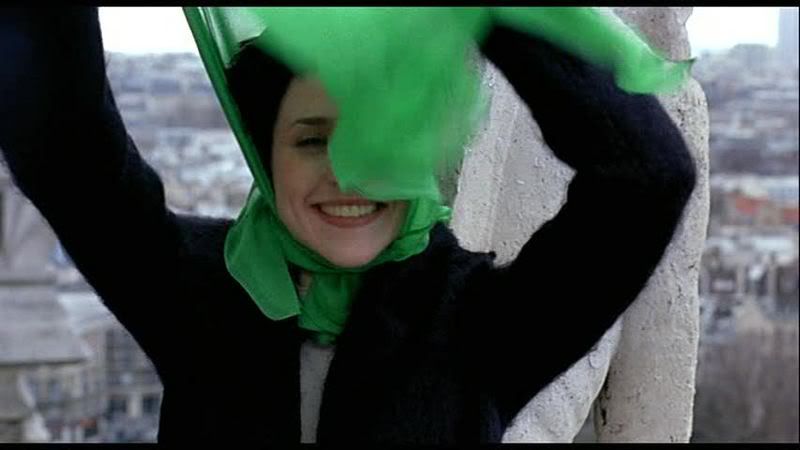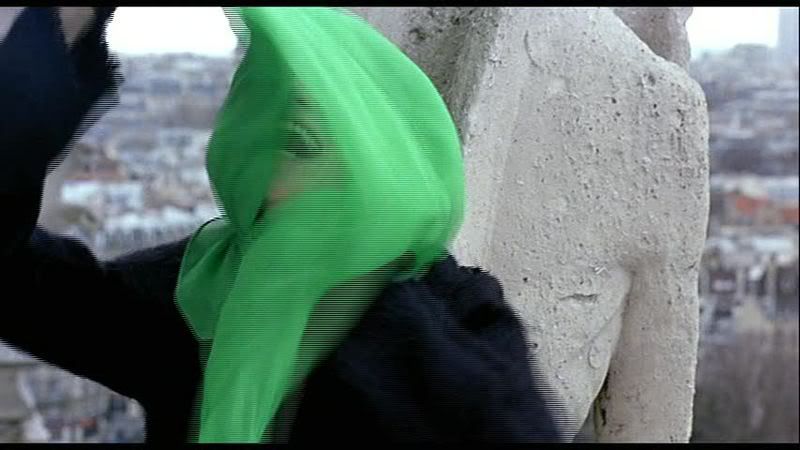by Stephen Farrell
I’ll be the first to admit it: I didn’t pay enough attention to pop culture this past year to compile any sort of coherent year end top ten list of either music (uh, Fishscale
was good) or movies (uh, Little Miss Sunshine
was…released). I did, however, do a bit of traveling the last few weeks of 2006, to a certain Eurasian country (the one that isn't isn’t Russia). Here are ten people, places, and things that I feel embody the essence of Turkey, in no particular order.
Mosques: 98 per cent of
Turkey is Muslim.
Of course, that’s li ke saying that
America is 70 per cent Christian, or
Japan is 95 per cent Buddhist.
The fact is, many people in Turkey, especially those of the younger generation, have quietly rejected their traditional faith, in much the same way that people the world over have turned to atheism, agnosticism, or (in America at least) various strains of kooky new age “spirituality” in the last half-century.
It seems that, in
Turkey, Islam is primarily practiced by the same demographic that apparently clung tightest to the Orthodox church in Soviet Russia:
Namely, little old ladies in head scarves.
True as that may
be, the physical symbols of Islam are much more pervasive than their counterparts elsewhere in the world, or than one would expect from a society that prides itself on its secularity.
The most obvious outward example is the sheer number of mosques in
Turkey—
Istanbul alone has some 2000. In the countryside, every one-horse village I saw had more mosques than what seemed appropriate given the local population – and never fewer than two per town.
I found the most interesting temples to be those which had been churches during the Byzantine period, and then converted after the Ottoman takeover in the fifteenth century.
Some of these old Eastern Orthodox churches are rooms the size of breakfast nooks, hollowed out of a cliff face, and decorated with, essentially, glorified cave paintings of the gospels (many of which had the faces scratched out b

y Muslims offended by representations of humans—particularly religious figures).
They served as a fascinating reminder that this Muslim land had once been a center of Christendom, both in Christianity’s nascent “outlaw” period and later in its rise to dominance in the Western world.
The greatest of these church-cum-mosques is
Istanbul’s Ayasofya, which was built in 537 by the Byzantine Emperor Justinian, and was the largest building in the world for just under a millennium, until
Rome’s Saint Peter’s Basilica surpassed it in 1623.

Turkish Coffee: I have to say this is one of the only things that truly disappointed me about
Turkey.
While I do not quite consider myself a coffee
connoisseur, per se, I have, over the years, developed a healthy addiction to the bean. And by American standards, I am probably a bit of a snob about it. I’ve reached a point where I consider anything other than Peet’s to be a sort of step down—hey, it’s not my fault I grew up in the
East Bay.
Anyway, you can imagine my excitement when I anticipated enjoying the much-fabled Turkish coffee.
But the “authentic” way to drink it is loaded with sugar so that when you get to the unfiltered grounds at the bottom, you’re basically drinking a mudlike treacle of pure caffeine.
The whole time I was there, I never saw a single Turk drinking the stuff; instead, they drink copious amounts of tea—which they call
cay, and pronounce “chai”—multiple times a day.
It was very good.
 Space Issues:
Space Issues: I never realized how uptight Americans are until I saw grown Turkish men walking down the street arm in arm (or, perhaps more remarkably, adolescent boys doing the same).
This speaks to two ways in which American and Turkish norms stand in stark contrast: we are much less secure in our sexuality, and much more uptight about our personal space.
I’m not exactly sure where to point the finger for the latter except at all the usual suspects and easy targets like, say, Puritanism? the social awkwardness of the Founding Fathers? Er…Manifest Destiny? Whatever the reason, one thing is for sure: we like our space. Or, we do not like it when people get all up in our grills.
The Turks, however, do not seem to have a problem with this.
 Cigarettes:
Cigarettes: As I said, 98 per cent of Turks are Muslim.
If that surprises you, get this:
After doing my own research I concluded that 126 per cent of the Turkish population smokes cigarettes.
And I don’t mean some “one or two after dinner or when I’m stressed out” nonsense.
I’m talking about full-on two to three packs a day, have-a-cigarette-to-celebrate-finishing-a-cigarette smoking.
Nowhere I’ve been (in the
U.S. or even
Europe) comes close.
And you can smoke anywhere: airports, corner stores, Starbucks, in trains, planes, and automobiles.
The only place I didn’t see people actively smoking was inside the mosques.
I managed to avoid seeing the inside of any hospitals on my trip, but I imagine there would be ashtrays on every surface. And I thought
Kentucky was bad.
 Food: One thing about Turkish food is that it covers a lot of ground. While old standby cuisines like Mexican and Italian are great, we all know that there’s not much difference ingredient-wise, between, say, cannelloni and enchiladas. Turkish food, on the other hand, combines the best of Mediterranean and Middle Eastern cuisines, but they mix it up a little more than you might expect. Instead of the typical pita (pide in Turkish) outer shell for the doner (what we would call gyro) sandwich, you can get the spit-roasted lamb wrapped in a tortilla-like flatbread – or served on an American-style sandwich bun, which was my favorite. It was hard not to eat these for at least two meals a day since they went for as little as 1.50 lire (about one dollar) a pop. Also represented are regional crowd pleasers like dolmas, kebabs (kebaps), and all kinds of yogurt and olive concoctions. The tapas-style meze appetizers were also delicious, as well as, of course, a dizzying array of deserts, the most well-known of which is baklava—whether baklava was invented by the Turks or the Greeks is a bone of contention between the two nations as big as Cyprus. Supposedly, the dessert culture in Turkey remains huge because one of the Ottoman sultans was convinced sweets were an aphrodisiac: you can still find a type of baklava termed “Turkish Viagra” for sale in the bazaars of Istanbul
Food: One thing about Turkish food is that it covers a lot of ground. While old standby cuisines like Mexican and Italian are great, we all know that there’s not much difference ingredient-wise, between, say, cannelloni and enchiladas. Turkish food, on the other hand, combines the best of Mediterranean and Middle Eastern cuisines, but they mix it up a little more than you might expect. Instead of the typical pita (pide in Turkish) outer shell for the doner (what we would call gyro) sandwich, you can get the spit-roasted lamb wrapped in a tortilla-like flatbread – or served on an American-style sandwich bun, which was my favorite. It was hard not to eat these for at least two meals a day since they went for as little as 1.50 lire (about one dollar) a pop. Also represented are regional crowd pleasers like dolmas, kebabs (kebaps), and all kinds of yogurt and olive concoctions. The tapas-style meze appetizers were also delicious, as well as, of course, a dizzying array of deserts, the most well-known of which is baklava—whether baklava was invented by the Turks or the Greeks is a bone of contention between the two nations as big as Cyprus. Supposedly, the dessert culture in Turkey remains huge because one of the Ottoman sultans was convinced sweets were an aphrodisiac: you can still find a type of baklava termed “Turkish Viagra” for sale in the bazaars of Istanbul
 The EU:
The EU: Although we naively assume that
Turkey is pro-EU, the Turkish people are quite fiercely divided on the issue.
The concerns about
Turkey’s possible admission to the club are more or less what you would expect.
Proponents claim that joining would open up important European markets and give a powerful boost to the developing nation’s economy.
Critics, on the other hand, argue that Turkey needs the EU like a hole in the head: the Turkish economy is the fastest growing in Europe (26 per cent in the last three years), and the relaxation of tariffs and other trade barriers required by EU membership could make Turkey susceptible to exploitation at the hands of the richer member states—sentiments which echo the arguments against globalization everywhere.
Western Europe, for its part, is more than a little nervous about the prospect of Turkish membership, in large part due to the spike in Turkish immigration to the West that it would undoubtedly cause.
After all, few things make Europeans more squeamish right now than a bigger Muslim presence on the continent.

Efes Pilsen: Efes Pilsen is the Budweiser of Turkish beers. It can be found in every restaurant and liquor store in the land, and you can go into any of these joints, ask for “a beer,” and be confident that you will be served none other than a nice cold Efes. It costs about as much as a pricey microbrew in the States (not price adjusted for the GDP difference between the two countries—all booze is really expensive in Turkey) and it tastes like Hamms. The fact that Turkey is so Muslim and yet everyone drinks beer (almost as much as they drink raki, the anise-derived aperitif that no one in the country seems to be able to eat a meal without) is yet another one of the many contradictions that make Turkish culture fascinating. The second most popular beer in Turkey is, of course, MGD.
 Graffiti:
Graffiti: While we complain about the co-optation of urban art culture by the mainstream and debate the merits of graffiti moving from the streets to the art gallery, the Turks have a bigger problem: their graffiti sucks.
Most of the stuff that I saw was on some strictly middle school shit: triple-sixes and pentagrams, the ubiquitous anarchy logo, strange, vaguely threatening non sequitors (“LETHAL MAFIA MASSACRE”), and my personal favorite, “Love is Nothing Without
FUCKING,” scrawled on the gates of the nineteenth century Ottoman Domabache Palace.
More disturbing were the swastikas and other Nazi imagery which always seemed to accompany the anarchy symbols (“SS anarchy PUNK”).
The strange thing is, the graffiti didn’t look as out of place as it usually does in American cities—something about seeing quasi-political things written sloppily on the walls of narrow medieval streets struck me as weirdly appropriate.

Fashion: On paper, Turkish style leaves something to be desired. The hot shit this season seemed to be pointy shoes, vintage-style army coats, and fauxhawk-mullets—all on both guys and girls. Yet what struck me was how their fashion sense is refreshingly less “cliquey”, and more homogenous than we’re used to. For instance, I saw very few people that in the States would be considered to be dressed “hip-hop” or “indie” or whatever. Everyone there just looked like they were drawing from the same huge pool of style options, instead of from the countless tiny (limited) pools here at home. There seemed to generally be less of the sense that someone’s personal style reflects his or her lifestyle/musical preferences/political leanings, and in so doing they have managed to do what no one in America seems capable of: being hip without being trendy.

A Bridge Between East and West: When Westerners think of Turkey (if they think of it at all), they tend to view it as some sort of middle ground between East and West, between Europe and the Middle East/Asia. Technically, of course, that’s true—the Bosporus strait runs right through Istanbul, separating Europe from Asia and making it the only city in the world to straddle two continents. But culturally, things are not so simple. What I realized in my travels is that the “East-West bridge” concept has some truth to it, but does sort of a disservice to Turkey. By regarding the country as nothing more than an intermediary zone between two clearly defined cultural spheres, this formulation does not allow much for Turkey to call its own: it assumes that every cultural aspect of Turkey must be derived from either Europe or the Middle East—or some combination of the two. Turkey, like everywhere else, of course has its own unique culture. But this proves a more important point: not only is the Turkey-as-bridge concept a fallacy, the whole idea of Eastern and Western spheres is closed and simple and wrong. While certain Europeans would like to believe that The West begins in the UK (or perhaps California?) and extends to the European shores of the Bosporus, this is a myth. This would imply that Bulgaria is culturally closer to Scotland than it is to central Turkey. I think not. There is, in fact, a great cultural continuum—and Turkey, like every other nation, sits in its own unique spot, just as it occupies its own distinct place on the map.

Ataturk: If Efes Pilsen is the Budweiser of Turkish beers, Ataturk is the Efes Pilsen of Turkish national heroes—which is to say, he’s inescapable. He was a military hero who led Turkey to independence after the First World War, the founder of the modern republic and the nation’s first president. Because of these accomplishments it is tempting to call him the George Washington of Turkey, but this doesn’t really do him justice. Not only does his handsome, benevolent visage grace every denomination of Turkish currency, more or less every place of business and family home has at least one picture of Ataturk on the wall—as does every official or government office, and most have a statue out front to boot. Sort of like cigarette smoke, the motherfucker is EVERYWHERE in Turkey. The guy’s cult of personality would give Stalin wet dreams, and it’s not completely undeserved: in a lot of ways, Turkey’s relative success in the modern world is due to Ataturk. His leadership in the fierce battle for independence (against the British and French, who were trying to carve up imperialist “spheres of influence” in the formerly Ottoman Middle East at the time) and the secularist reforms he instituted in the new republic are largely responsible for Turkey, today, resembling a functioning, upwardly mobile democracy and not a war-ravaged, religiously fundamentalist, third world sinkhole like most of the rest of the region.
Honorable Mention: Turkish baths, Turkish bathrooms (surprisingly clean), Turkish hip-hop, denial of the Armenian genocide, stray dogs, Santa Claus





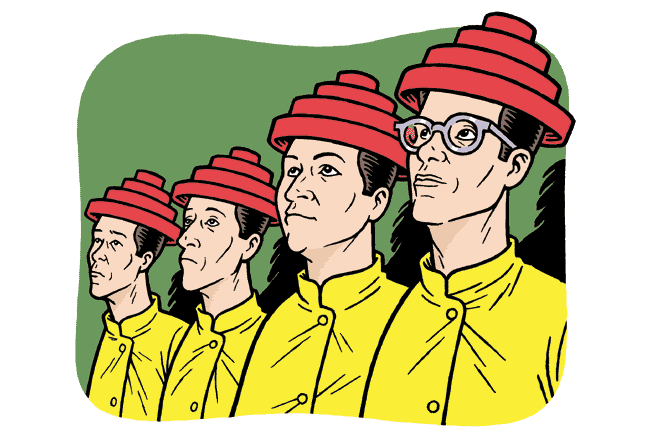
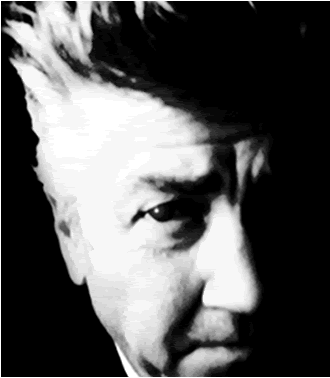

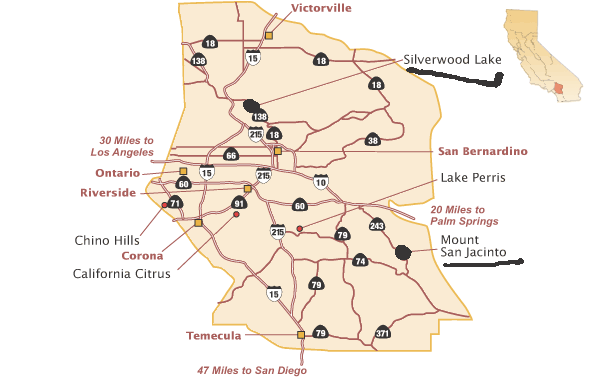
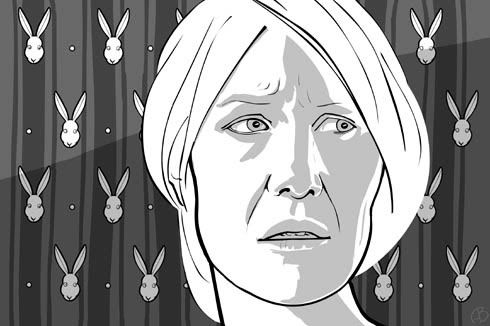














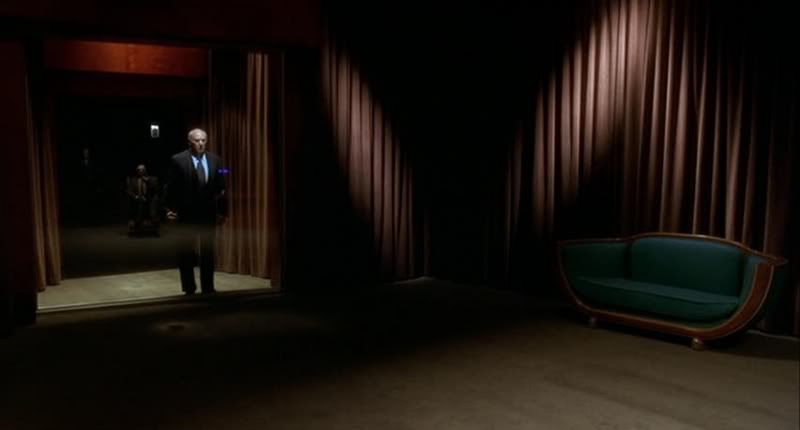
 Unlike the filmmakers in the situations cited above, Lynch seems to have plunged into INLAND EMPIRE with the notion that his little camera could do it all. With a $17.5 million budget and a shoot divided between Poland and Los Angeles, the film is hardly a threadbare, guerilla art project. But the PD-150 is not a million-dollar Panavision 35mm or HD camera. Lynch’s improvised saga of “a woman in trouble” moves like Lost Highway and Mulholland Drive. The mise en scene and lighting deliver mysteries that the PD-150’s anemic colors and absence of progressive scan turn into useless conundrums.
Unlike the filmmakers in the situations cited above, Lynch seems to have plunged into INLAND EMPIRE with the notion that his little camera could do it all. With a $17.5 million budget and a shoot divided between Poland and Los Angeles, the film is hardly a threadbare, guerilla art project. But the PD-150 is not a million-dollar Panavision 35mm or HD camera. Lynch’s improvised saga of “a woman in trouble” moves like Lost Highway and Mulholland Drive. The mise en scene and lighting deliver mysteries that the PD-150’s anemic colors and absence of progressive scan turn into useless conundrums. An INLAND EMPIRE shot on the DVX-100a might have been too beautiful for the heart to take. But not since Zacharias Kunuk’s fiercely poetic
An INLAND EMPIRE shot on the DVX-100a might have been too beautiful for the heart to take. But not since Zacharias Kunuk’s fiercely poetic 